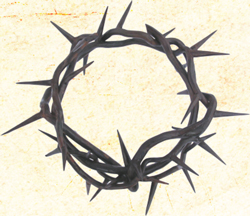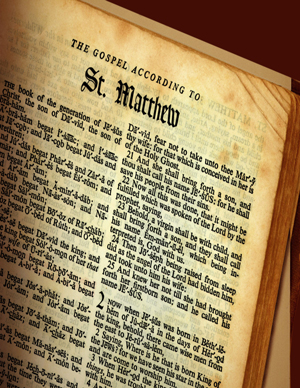
As a child growing up in the Baptist church I was always bewildered every Easter. In one week the people in Jerusalem went from praising Jesus as he rode into the city in triumph on Palm Sunday to crucifying him the following “Good Friday.” What could have precipitated such a drastic turn of events? Sometimes it takes centuries to answer certain questions.
Sometimes it takes history to repeat itself for observers to get a grasp of the motivations behind a series of seemingly impossible events.
Such a time is now and the man being crucified is the Honorable Minister Louis Farrakhan, a man who has done no wrong, except tell the truth on and to the principalities, powers, and the rulers of the darkness of this world, “against spiritual wickedness in high places” (Ephesians 6:12). And since “the powerful” cannot defeat Minister Farrakhan with truth, they have resorted to using their power and influence over “the people” to try get them to turn their backs on him while they plan his demise.
“Then the chief priests and the elders of the people assembled in the palace of the high priest, whose name was Caiaphas, and they schemed to arrest Jesus secretly and kill him. ‘But not during the festival,’ they said, ‘or there may be a riot among the people’ ”(Matthew 26:3-5).

If we analyze this passage, there are three distinct classes of people: (1) the chief and high Priests, (2) the Elders of the people, and (3) the people. It is clear that the priests and elders are not just conspiring against Jesus; they are also conspiring against “the people.”
The Honorable Elijah Muhammad pierces through the confusion and exposes the cause of this division when he writes in Message to The Blackman In America (p. 251):
– “As Jesus comes close to revealing the whereabouts of the lost members of a great nation in these words, ‘that he was sent to the lost sheep of the house of Israel, or in the house of Israel.’
– He did not say that he was sent to the lost Israel, but to the lost sheep in the house of Israel. The lost sheep are not Israel. The lost sheep were in the house or government of Israel and were swallowed up by Israel so thoroughly that they were always overlooked.”
Here we see that “the lost sheep” and Israel are not the same. Who were these “lost sheep” and how did they end up in Israel? Where did Israel or, rather, the governing body of Israel come from? If you look at a map of Israel or Palestine, you will see that it lies between two continents, Africa and Asia, on the overland trade routes between the two. If we go back to ancient times, we find that at one time Ancient Egypt (Kemit) held dominion over Palestine, and Jerusalem was used as an outpost to protect the borders of Egypt and secure the trade routes to Asia. Eventually the Egyptians lost control of Palestine when Nebuchadnezzar, king of the Babylonians, swooped through Palestine and took prisoners back to Babylonia in 597 BC. This phase of Jewish history is referred to as the “captivity.” This forced exile ended in 538 BC, when according to the Bible, the children of the captives or slaves were allowed to go back to Palestine, led by Ezra, with instructions to rebuild the Temple and reintroduce the Torah, which had been destroyed (Ezra 7-10 and Neh. 8). However, they were admonished by their “liberator,” the Persian King Cyrus the Great, not to allow the natives of Palestine, many of them Jews, to participate in the rebuilding of the Temple or intermarry with those “returning” from Babylon. This ruling class, called Pharisees, who came from Babylon, now ruled over “the people” of Palestine for the Persian rulers who now occupied Israel.
When the Romans conquered Palestine and took over Israel, the priests and elders ruled over “the people” for the Romans. This division between the priests, also called the Scribes and Pharisees, is highlighted in a conflict that Jesus had with them where they told him: “We be Abraham’s seed, and were never in bondage to any man … ” (John 8:33). Therefore, the Scribes and Pharisees exposed that they did not consider themselves returned captives, but a separate class ruling over the people in Israel. In fact, the word “Pharisee” in Hebrew means “set apart.”
The Pharisees were the Rabbis that later developed the Babylonian Talmud. And according to the Jewish Encyclopedia: “Henceforth Jewish life was regulated by the teachings of the Pharisees; the whole history of Judaism was reconstructed from the Pharisaic point of view, and a new aspect was given to the Sanhedrin of the past. A new chain of tradition supplanted the older, priestly tradition (Abot i. 1)”. Like Jacob who supplanted his brother Esau in the Book of Genesis, the Pharisees of Jesus’ time had replaced the older priesthood.
Now, as we look at Minister Farrakhan and his conflict with the ruling class of Jews today, we find them trying to divide him from his people who have been lost from their own people for 400 years, swallowed up and renamed by a strange people, White folk. The present day Scribes and Pharisees (Abraham Foxman, Mark Potok and Harold Brackman) are trying to get the modern Rome, the U.S. government, to censor Minister Farrakhan by calling his truth-telling “hate speech” and anti-Semitism. These so-called Jews are even intimidating “the elders” or leaders within the Black community, such as Congressman John Conyers, into denouncing Minister Farrakhan.
Now Minister Farrakhan has called for a “Showdown” between the scholars of these Ashkenazi Jews and the scholars of the Nation of Islam to find out who is following truth and who is following and spreading falsehood. “The people” are now in the valley of decision and–like “the people” at the time of Jesus–are given a choice. Will they turn against the man with whom they triumphantly road into modern Jerusalem, Washington, D.C., in 1995, at the head of 2 million Black men at the Million Man March? We have history as a mirror to judge the progress of the thinking of “the people.” Will the people allow the enemy of man and mankind, using innuendo and false allegations, to turn them against Minister Farrakhan, like “the people” who were turned against the Jesus of 2,000 years ago?
(Dr. Ridgely A. Mu’min Muhammad, Ph.D is an agricultural economist, and member of the Nation of Islam Research Group. Visit the group online at http://www.noirg.org, join the conversation on http://www.FaceBook.com/NOIResearch and Twitter @ NOIResearch.)












